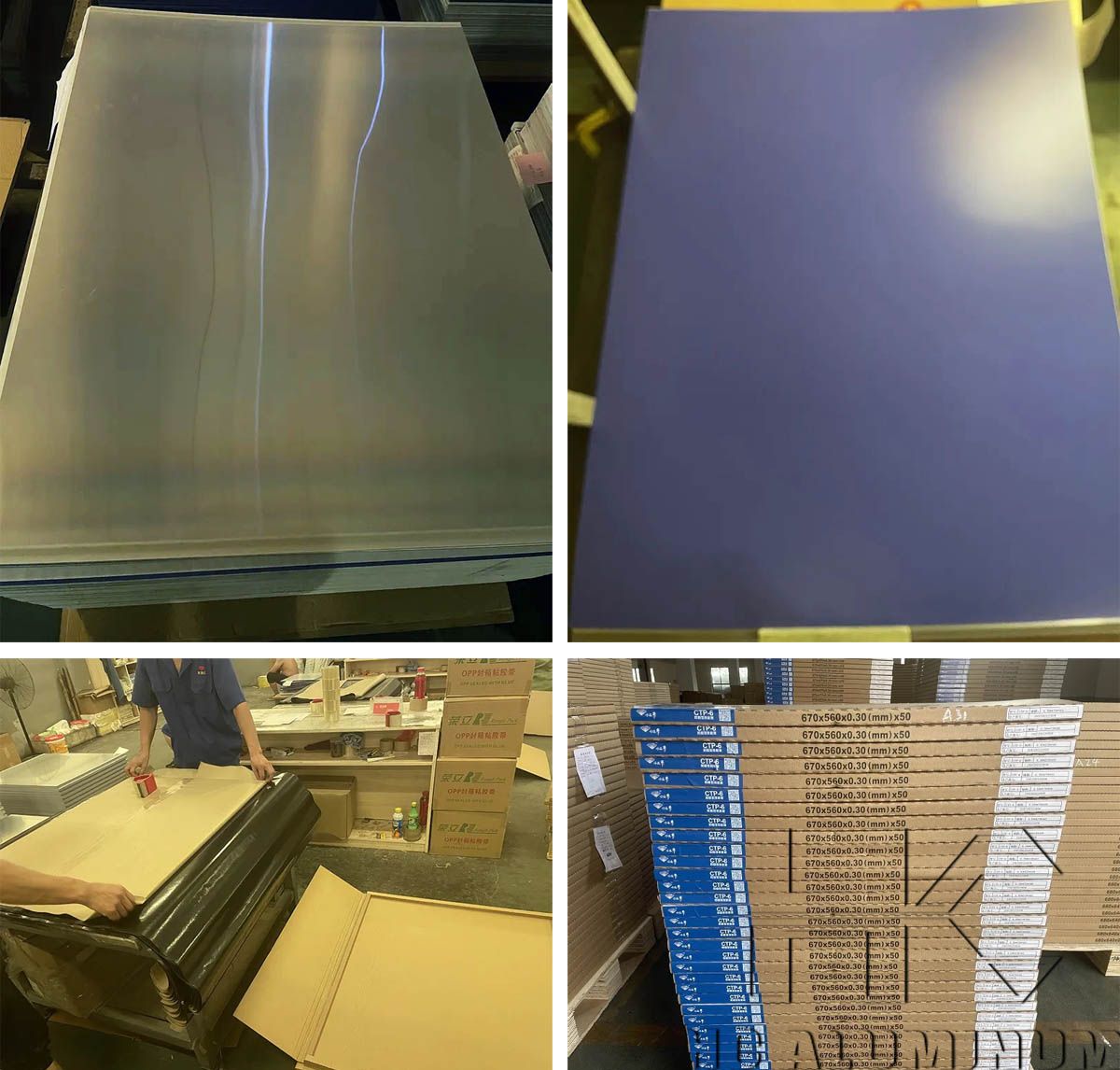If you have any questions, you can directly consult our online customer service. You can visit us online via WhatsApp. We look forward to your visit.
WhatsApp:8618703635966 Online
Magazine uses offset CTP version
CTP (Computer-to-Plate) printing plates, as a representative of digital plate-making technology, have become a core process in the magazine printing industry due to their efficiency, environmental friendliness, and high precision.
The main raw material for CTP plates is the printing plate material, which is typically made from aluminum base plates (also called aluminum plates) that are treated with a coating to accept image transfer.
Aluminum substrate: The base material for CTP plates is mostly aluminum alloy, such as 1050, 1060, and 1070, which are 1-series pure aluminum alloys. The thickness ranges from 0.13 to 0.4 mm, and they are usually in H18 temper. These aluminum plates have high strength and durability, excellent flatness, and thermal conductivity, which helps improve the stability of the printing process.
Photosensitive Layer: The surface of the aluminum base plate is coated with a photosensitive material (such as photosensitive resin) to record the digital image. This photosensitive layer is sensitive to ultraviolet light and undergoes a chemical reaction when exposed.
Protective Layer: The photosensitive layer is typically covered by a protective film to prevent scratches or contamination during use.
CTP technology no longer relies on traditional processes such as film-making and plate-making. Instead, it directly transfers image data from the computer to the printing plate through laser exposure. The laser device transfers the image information onto the photosensitive layer through precise light exposure.

CTP Plate Technical Classifications
| Thermal CTP Plate | Suitable for high-precision magazine printing. Infrared laser exposure ensures sharp dot edges and supports room light operations, offering strong stability. |
| Photopolymer CTP Plate | Requires a violet or argon ion laser light source and is suitable for fast plate-making for commercial magazines. However, it is sensitive to ambient light. |
| Processless CTP Plate | Eliminates the need for developing steps, making it suitable for time-sensitive periodical printing, but requires automated cleaning equipment. |
Core Advantages of CTP Plates:
1. Increased Production Efficiency: CTP plates directly transfer digital images from the computer to the plate, eliminating traditional plate-making and photographic processes, thus reducing plate-making time.
2. Higher Precision: Since there are no intermediate steps as in traditional processes, CTP technology can more accurately transfer the digital image data, reducing errors and color discrepancies, and ensuring stable print quality.
3. Environmentally Friendly and Energy-Saving: CTP plates do not require traditional chemical developing liquids or films, reducing the production of chemical waste and making it a more environmentally friendly option.
4. Cost Savings: By eliminating the need for film-making, chemicals, and manual labor, CTP technology significantly reduces printing costs in the long run.
5. Greater Flexibility: CTP technology allows for more flexible plate-making, making it possible to quickly adjust images according to different printing requirements, without being restricted by traditional processes.
Applications of CTP Technology in the Printing Industry:
Magazine Printing: CTP technology ensures accurate colors, clear images, and high-quality standards for each page of the magazine.
Newspaper Printing: Increases production efficiency and ensures consistency in printed materials, making it ideal for mass production.
Packaging Printing: High-precision CTP plates ensure that the visual effects meet design requirements and reduce printing defects.
Book Printing: Reduces errors and ensures consistent print quality for each book.

